Why you can trust Tom's Hardware
To learn about our HDR testing, see our breakdown of how we test PC monitors.
After applying an HDR10 signal, we still had to turn the PX278’s HDR mode on manually. And going back to SDR meant turning the feature off manually too. That’s a bit clunky, but there’s little to complain about when it comes to this monitor’s HDR accuracy.
HDR Brightness and Contrast
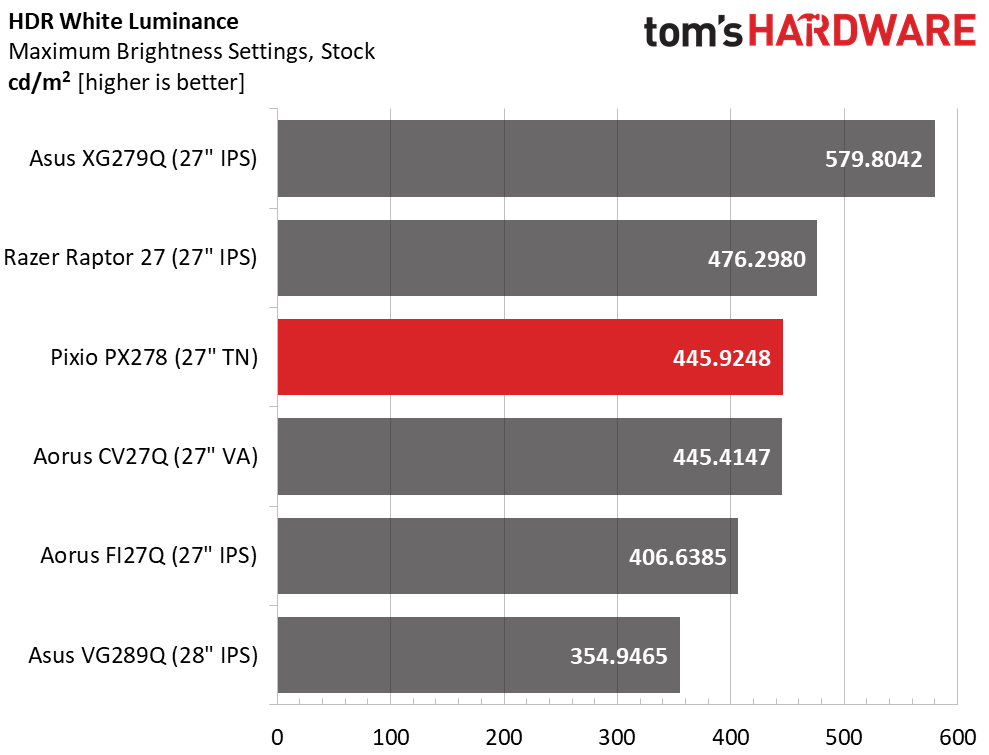
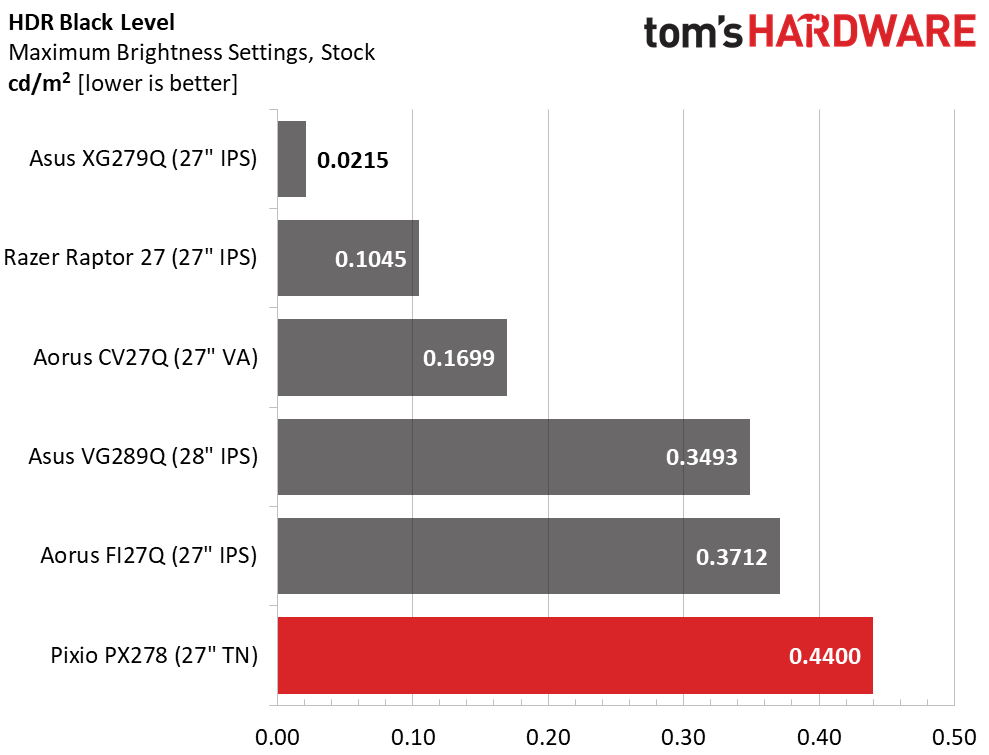
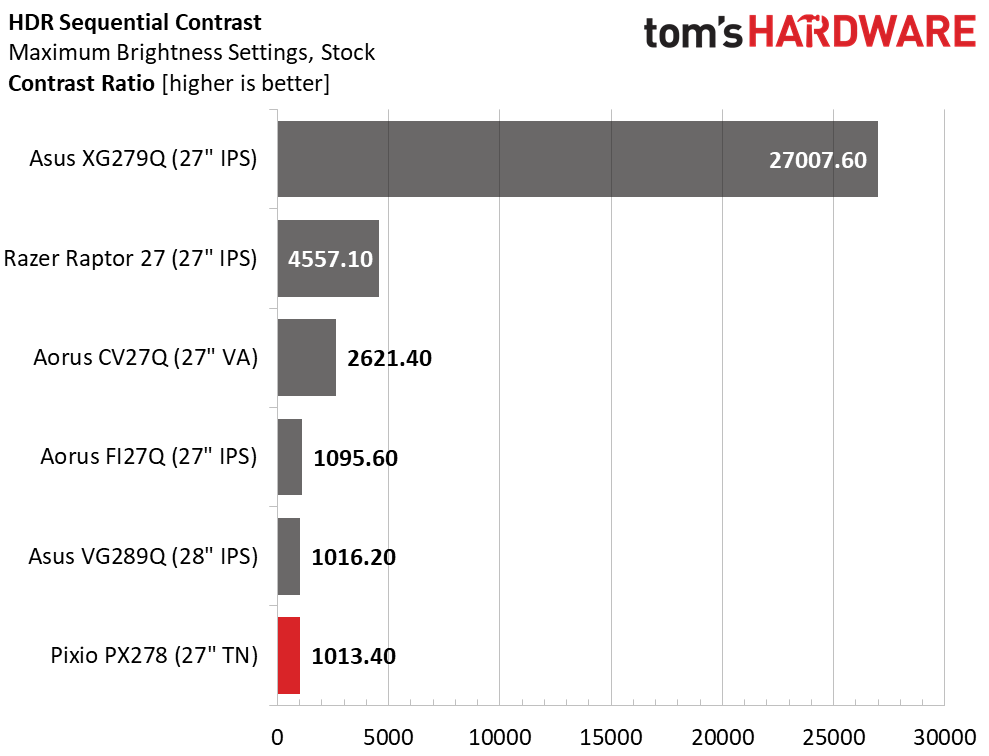
The Pixio PX278 doesn’t tout a VESA certification for DisplayHDR 400 but it easily exceeded 400 nits in HDR mode in our tests. Unfortunately, it doesn’t offer any dynamic contrast in HDR mode, so the static contrast ratio is the same as it is in SDR, 1,013.4:1. While it accurately rendered color and followed the correct luminance curve, the monitor didn’t look different when showing HDR content. At this price point however, no other screen can do better. The winners of today’s comparison all cost more than the Pixio.
Grayscale, EOTF and Color
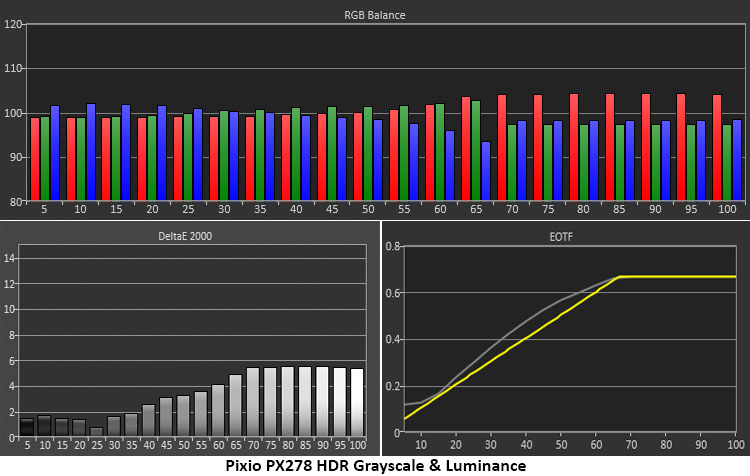
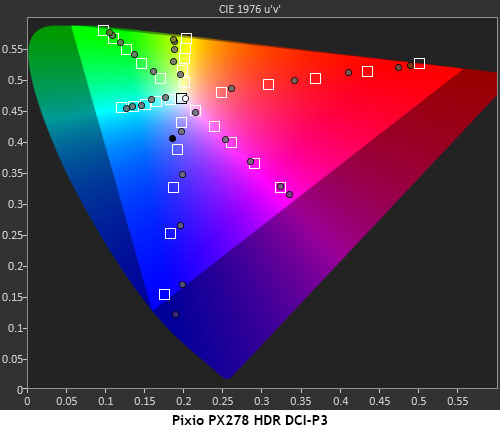
There is no real fault to be found with grayscale and color accuracy in the PX278’s HDR mode. The EOTF clip point is around 65%, and our measurements show a rise in brightness up to that point that’s slightly too fast. Thankfully, this didn’t have a significant impact on actual content. Grayscale tracking is also slightly warm in the brightest tones, but, again, this isn’t a big deal.
DCI color tracking in HDR mode runs generally over-saturated with some red and blue hues looking too vivid. Actual content looks OK but not that different from SDR. Given our hands-on experience, we’d use the HDR mode in supported games. The PX278’s price point is certainly attractive, but you will sacrifice some HDR impact in the process.
MORE: Best Gaming Monitors
MORE: How We Test Monitors
Get Tom's Hardware's best news and in-depth reviews, straight to your inbox.
MORE: All Monitor Content
Current page: HDR Performance
Prev Page Grayscale, Gamma and Color Next Page Viewing Angles, Uniformity, Response and Lag
Christian Eberle is a Contributing Editor for Tom's Hardware US. He's a veteran reviewer of A/V equipment, specializing in monitors. Christian began his obsession with tech when he built his first PC in 1991, a 286 running DOS 3.0 at a blazing 12MHz. In 2006, he undertook training from the Imaging Science Foundation in video calibration and testing and thus started a passion for precise imaging that persists to this day. He is also a professional musician with a degree from the New England Conservatory as a classical bassoonist which he used to good effect as a performer with the West Point Army Band from 1987 to 2013. He enjoys watching movies and listening to high-end audio in his custom-built home theater and can be seen riding trails near his home on a race-ready ICE VTX recumbent trike. Christian enjoys the endless summer in Florida where he lives with his wife and Chihuahua and plays with orchestras around the state.